No second COVID-19 wave, but first waves in some US states and developing countries are long and strong...
We've always argued that while sporadic outbreaks are likely, bona fide "second waves" in regions that have embraced a proper containment strategy are very unlikely. All the data to date supports this hypothesis. Nonetheless, with equity markets in free-fall on the back of second wave concerns, it is worth revisiting Coolabah Capital's proprietary COVID-19 tracking systems. This analysis reveals a few insights:
- There is no evidence of secular second-waves within any entire country, but there is clear evidence of second and third waves at a global level simply because COVID-19 takes time to propagate from nation to nation. In Coolabah's global curve you can see the first wave as China comes online and then flattens her curve followed by a second wave as the developed world catches COVID-19. We are now probably experiencing a third global wave as developing countries struggle to contain it. I will return to the developing world later.
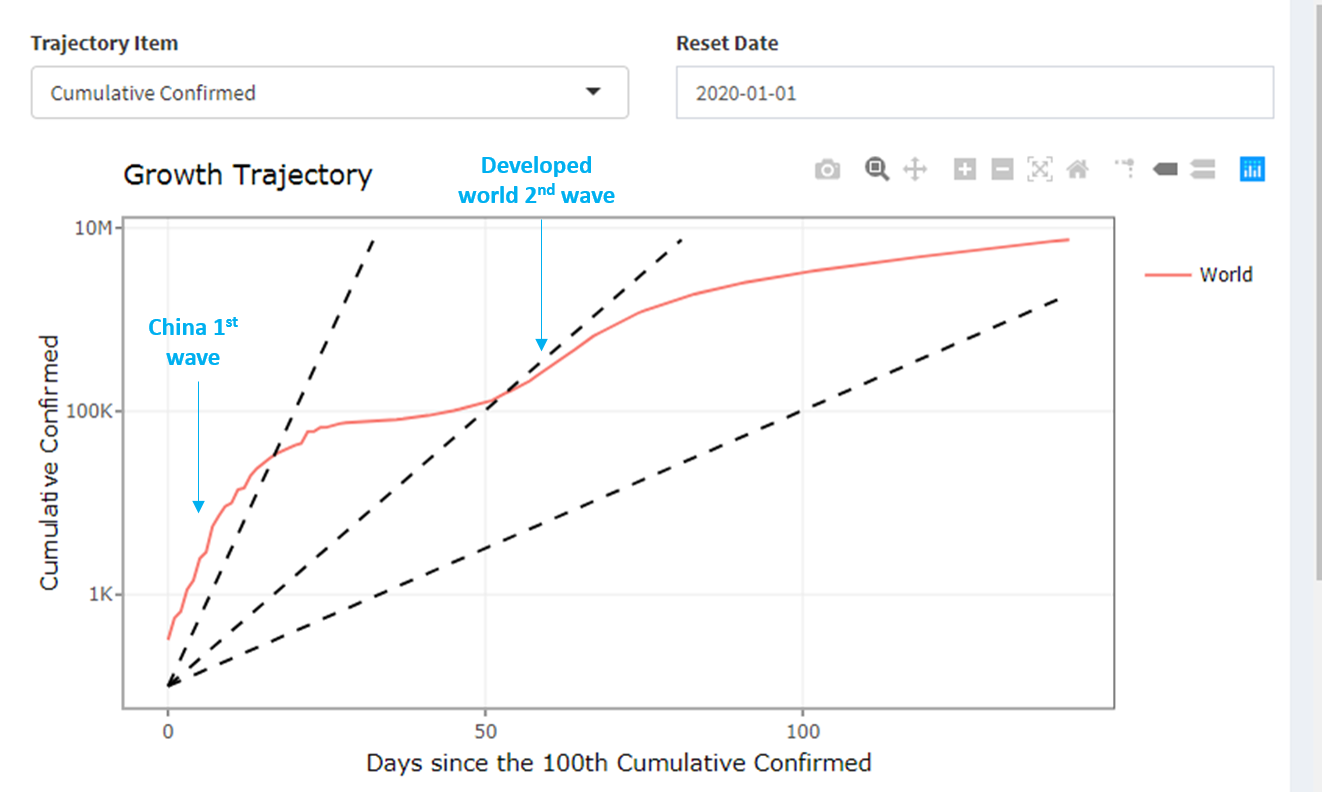
- While US infections peaked in early April as Coolabah originally forecast---and the US national and US ex-New York curves have since been flattening (top two lines in chart below)---they have not flattened like the curves of many other advanced economies such as Australia, New Zealand, South Korea, China, Germany, France, Italy, Taiwan, and the UK, to name a few. This appears to be a function of the much larger and federated structure of the US whereby early outbreaks in one state like New York have been subsequently followed by other states on a lagged basis, which means that the overall US infection numbers have been slower to decline over time.
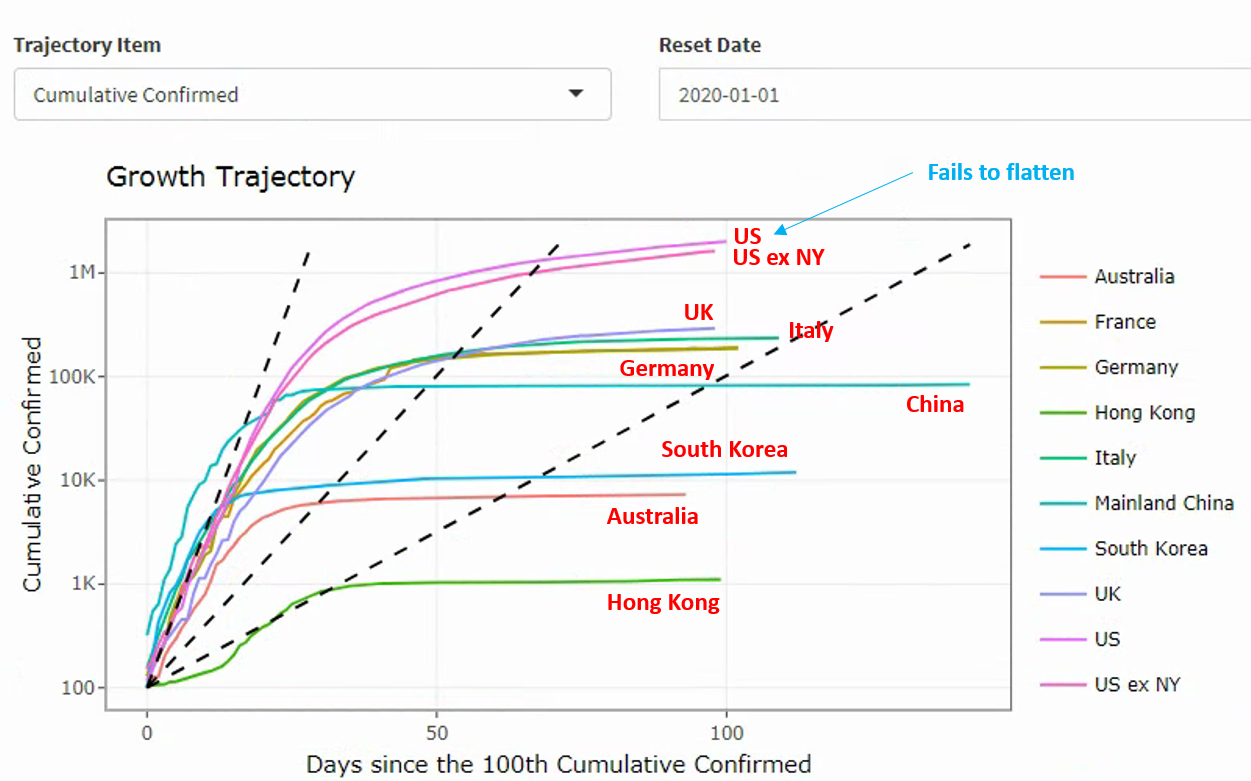
- It is also very clear in the US that some states have wittingly or unwittingly done a poor job of containment, which again is not that surprising: it was always likely that there would be patchy state-by-state containment results depending on the policies (and politics) of the individual state governors. For example, whereas New York (top blue line in chart below) appears to have done a very good job flattening its curve, others such as California (really poor), Texas (really poor), Florida, Arizona, Arkansas, and South Carolina have not. It should be noted, however, that the early outbreak in New York was much worse than these other states, which means New York has only done better after a far more severe initial crisis.
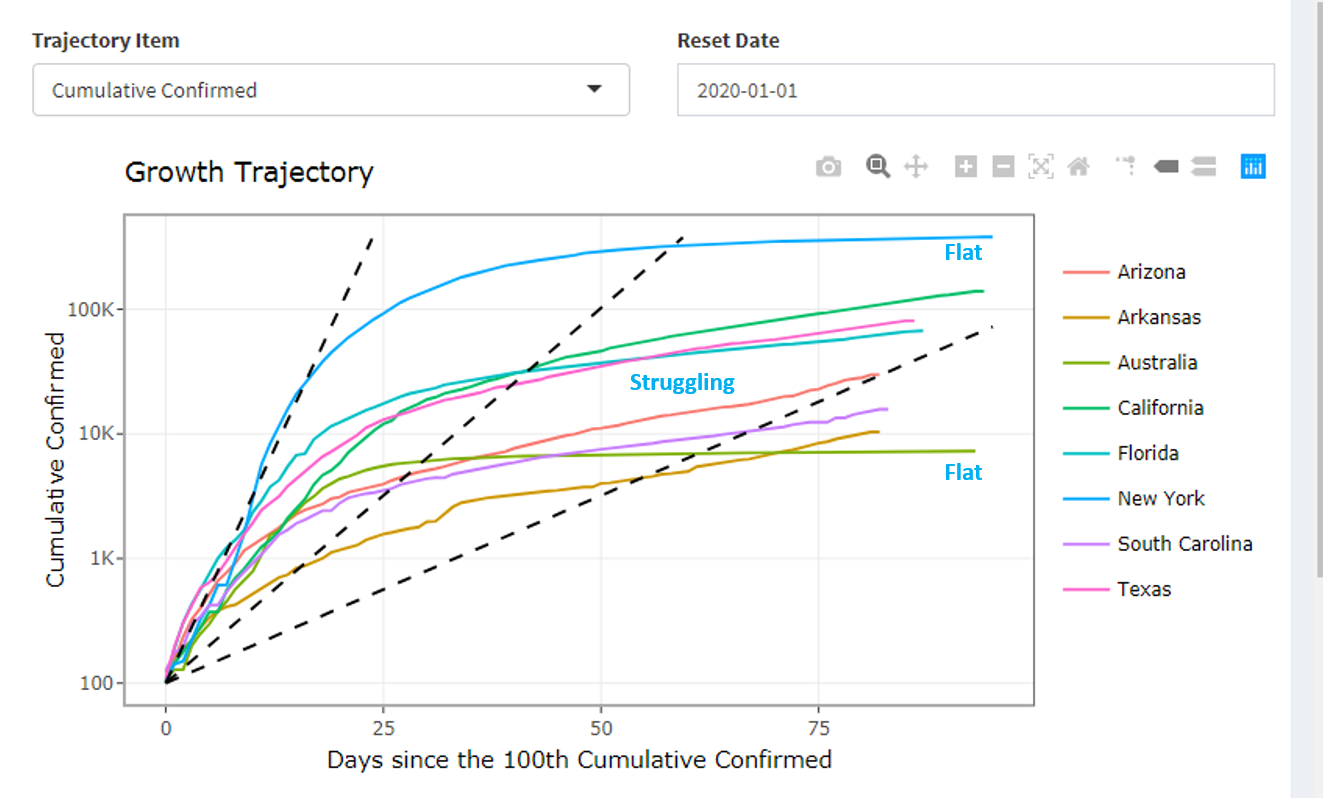
-
It is not really a case of second waves in these states, but rather an outright failure to contain COVID-19 in the first place and properly flatten their curves, which has led to either consistent increases in the number of new cases and/or recent surges. Put differently, the first wave has been longer and stronger. (And there may be some impact from the George Floyd protest movements, which has junked social distancing measures.) This is evidenced in the daily number of new infections across different states, which is highlighted in the first chart below. In the second chart we juxtapose the number of new infections across the US in its entirety (and the US excluding New York) against California and Texas. This demonstrates that while the number of new infections in the US overall is slowly trending down (even excluding New York), there are state-by-state exceptions.
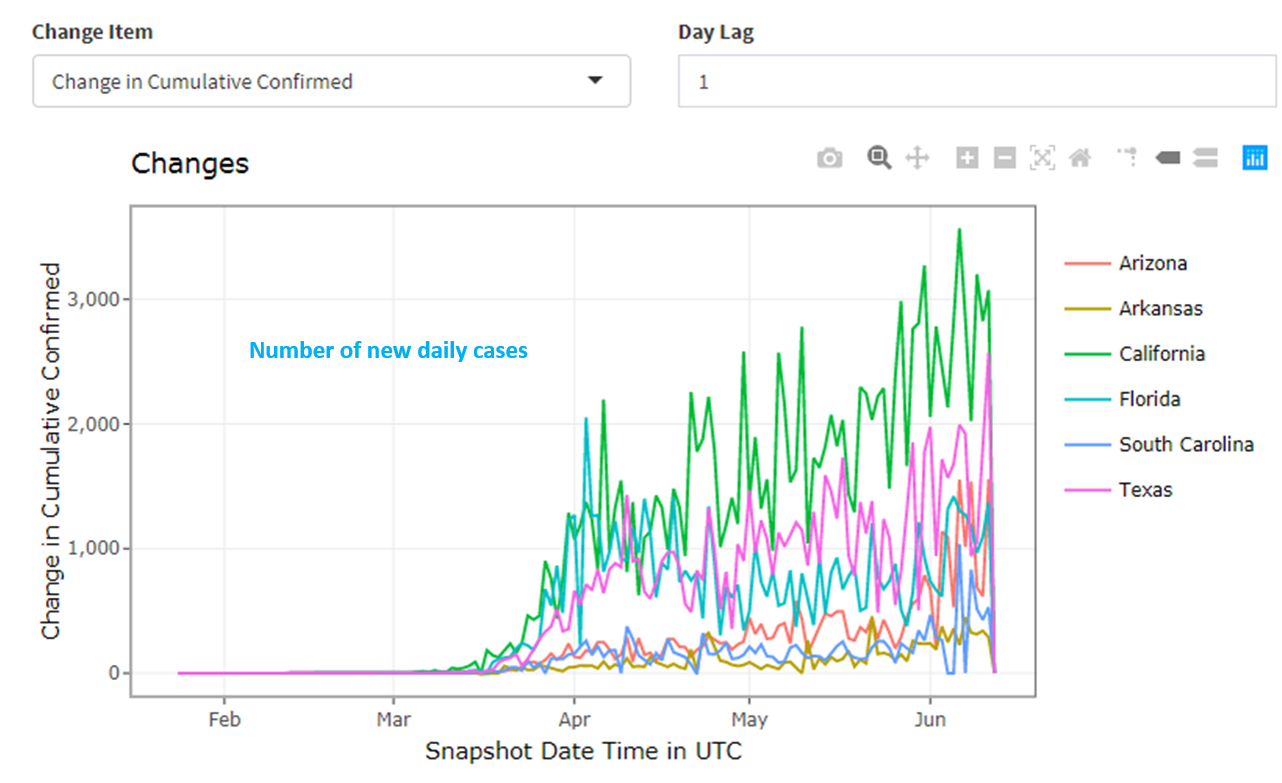
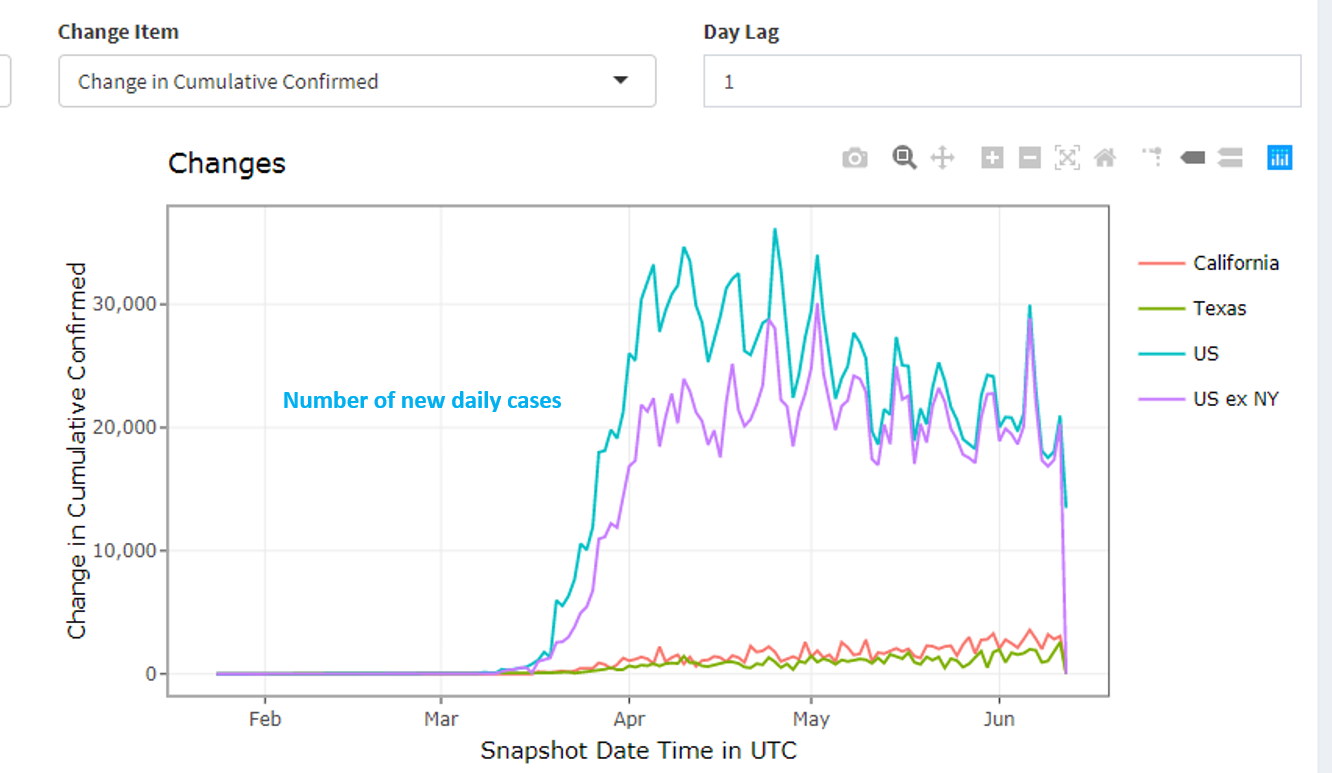
- Indeed, there are parallels between some US states, and the US more broadly, and Sweden, which has never tried to really suppress COVID-19 (or eradicate it). If we compare the number of new infections in Sweden to other countries like South Korea, Japan, and Australia (first chart below), you can see how COVID-19 has effectively disappeared after an initial spike in these nations whereas in Sweden (pink line) it has been tolerated with a consistent number of fresh cases over time (rather than a declining number of new infections as we see elsewhere). In fact, there is evidence of a recent spike in Sweden. If we then overlay California (top brown line), it looks like a very bad version of Sweden. One silver lining is that California and Texas are nowhere near as bad as New York was initially (see second chart below), albeit that New York's subsequent containment strategy has been much more effective in crushing new infections since its early spike.
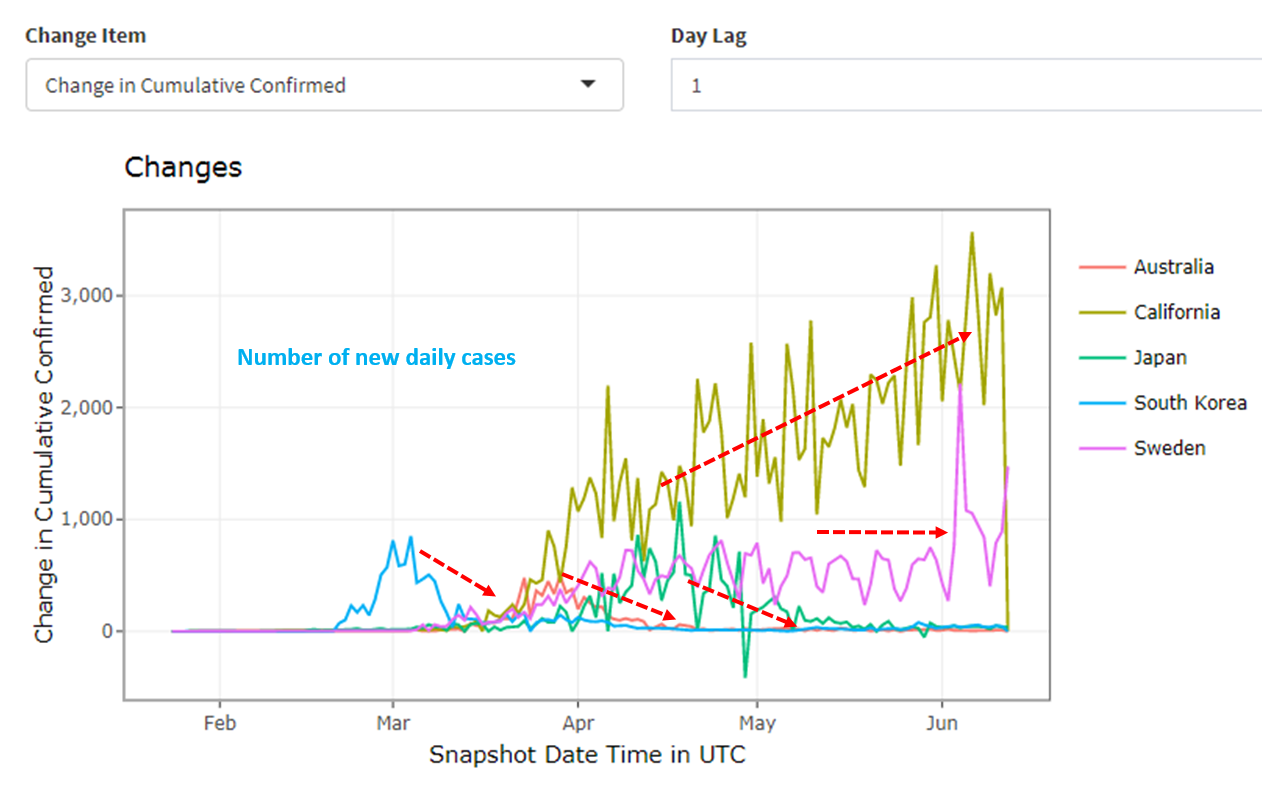
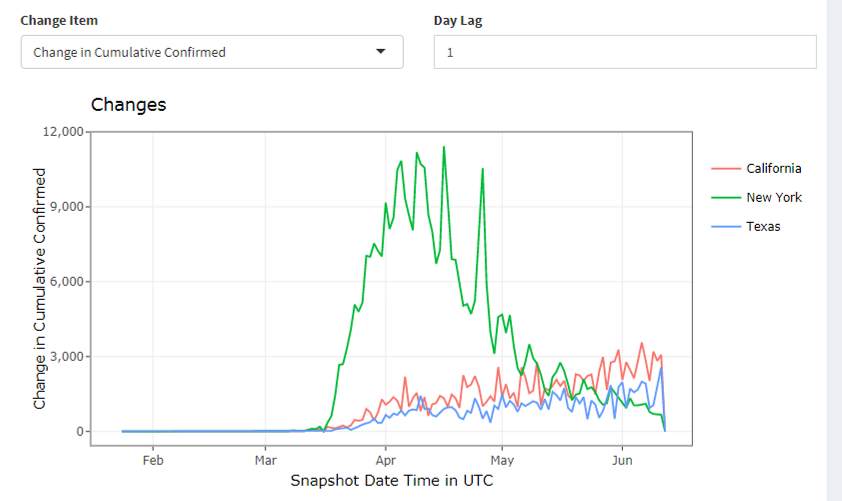
- Finally, we do observe a similar pattern in the developing world where new infection numbers are increasing in Africa, Brazil, India and South America (first chart) with no signs yet of a Western European-style crushing of new cases (second chart) or Russian-like stability (blue line in second chart). This means that cumulative infection curves are continuing to increase (third chart) rather than flattening hard as Australia (brown line in third chart) or Western Europe (second pink line from top in third chart) have done.
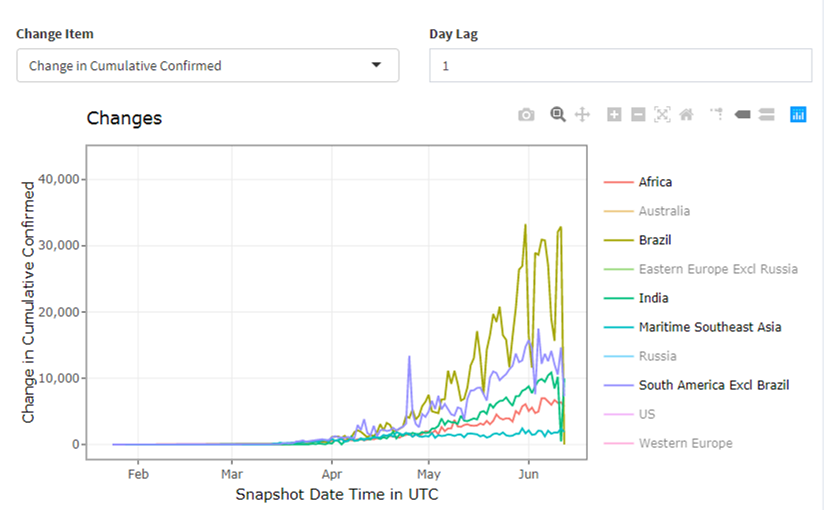
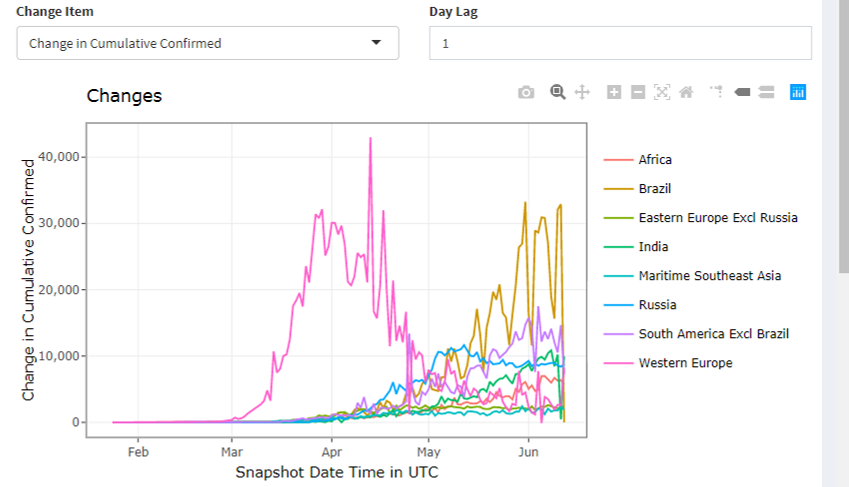
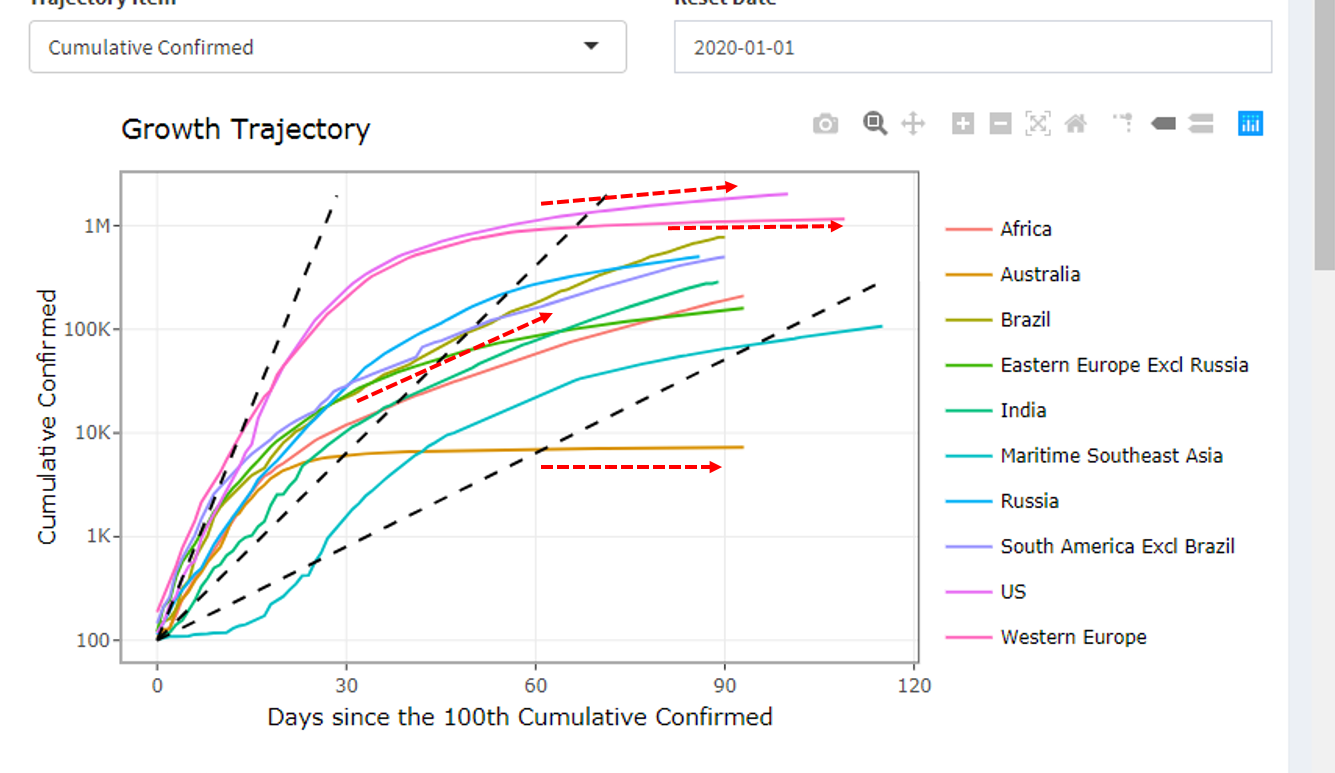
Building these real-time infection/fatality tracking and forecasting systems is no easy task, and I want to thank the 23 folks in my team, and the 11 analysts and five portfolio managers (including four PhDs) who have collectively contributed to this cause.
Get investment ideas from industry insiders
Liked this wire? Hit the follow button below to get notified every time I post a wire. Not a Livewire Member? Sign up for free today to get inside access to investment ideas and strategies from Australia’s leading investors.
2 topics

